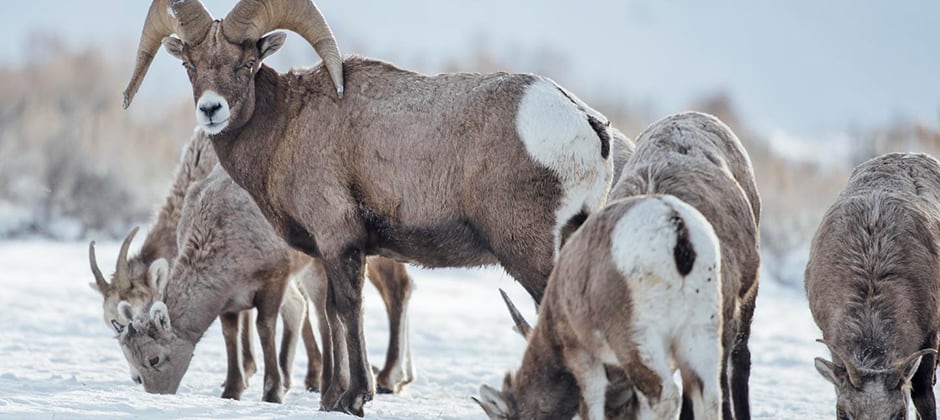Share this article
Do introduced bighorns never learn to migrate?
While bighorn sheep restoration became common after the species faced population declines in the 1900s, researcher recently found that restored populations differ from native sheep in one significant way. They have less migratory diversity than their native counterparts, and that raises concerns about their ability to respond to adversity.
Limited migratory diversity may be dangerous if the entire herd stays put in a location vulnerable to extreme weather or disease outbreaks, said Blake Lowrey, a postdoctoral researcher in Montana State University’s Department of Ecology and lead author of a recent study published in Ecology and Evolution. “From an intuitive standpoint, it’s import to not have all your eggs in one basket.”
In the study, Lowrey and his colleagues used data from bighorn sheep (Ovis canadensis) that had been GPS collared in Montana, Wyoming, Idaho and Colorado — part of a collaboration between federal and state agencies, MSU and others. “It’s probably one of the largest GPS data sets put together on bighorn sheep spanning northern Colorado up to northern Montana,” he said.
After reviewing the movement data, the team found that native populations, which have been on the landscape for many generations, migrated more than restored herds, and individuals within the herds showed variations of migration between winter and summer ranges. Some migrated vast distances. Others barely budged. Some went from low to high elevations. Others stayed at high or low elevation year-round. “It was a melting pot of movements,” he said.
Restored herds — including herds that had been extirpated and brought back and others that had declined and been augmented — migrated little or not at all.
“They mostly stayed on a single range year round,” Lowrey said. “And when they did migrate, their migrations were less diverse. Individuals were doing the same thing.”
Lowrey sees this difference between native and restored herds lining up with similar work describing migration as a learned behavior passed on from generation to generation. “The diversity of those behaviors takes a long time to develop,” he said.
If one bighorn randomly finds an area is beneficial, it may pass it on to its offspring, Lowrey said. “When we lose that in restored or augmented populations, when all or a portion are removed from the landscape, we lose that herd knowledge,” he said.
Noting studies that have shown the importance of variations in migration in fish and birds, Lowrey worries the lack of migratory diversity could endanger the herd if it stays in a place that is particularly susceptible to extreme weather or a disease outbreak that threatens the entire population. “As we see in other species, migratory diversity can buffer populations from various adverse conditions,” he said. He suggests that when managers restore bighorn sheep populations, they use individuals with different types of migratory strategies.
Header Image: Restored bighorn sheep populations, like this ram and yearlings, migrate less than those that are native to an area. ©MSU Photo by Adrian Sanchez-Gonzalez








